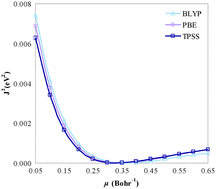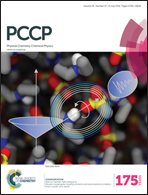First principles optimally tuned range-separated density functional theory for prediction of phosphorus–hydrogen spin–spin coupling constants
Abstract
Optimally tuned range-separated (OT-RS) density functional theory (DFT) is a recent endeavor toward the systematic and non-empirical routes for designing the exchange–correlation functionals. Herein, a detailed analysis of the development and benchmarking of the OT-RS functionals for predicting the experimental nuclear magnetic resonance (NMR) spin–spin coupling constants (SSCCs) in diverse sets of compounds containing phosphorus–hydrogen (P–H) bonds has been done. More specifically, besides analyzing the performances of standard long-range corrected (LC) functionals, two new non-empirical OT-RS functionals are proposed for this purpose. Furthermore, we dissect the importance of both short- and long-range exchange contributions and range separation parameters in LC density functional calculations of P–H SSCCs. It is shown that the proposed functionals not only give an improved description of SSCCs with respect to conventional LC approximations but also in many cases perform better than other functionals from various rungs. The accountability of the new models for predicting the SSCCs and their components in continuum solvents has also been examined and validated. Overall, we hope that this contribution stimulates the development of novel OT-RS DFT approximations based on theoretical arguments as a methodology with both high accuracy and computational efficiency for modeling the NMR parameters.


 Please wait while we load your content...
Please wait while we load your content...